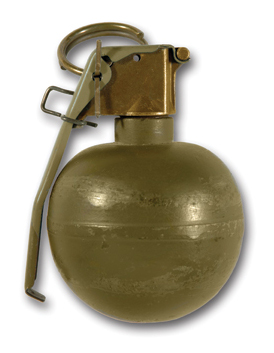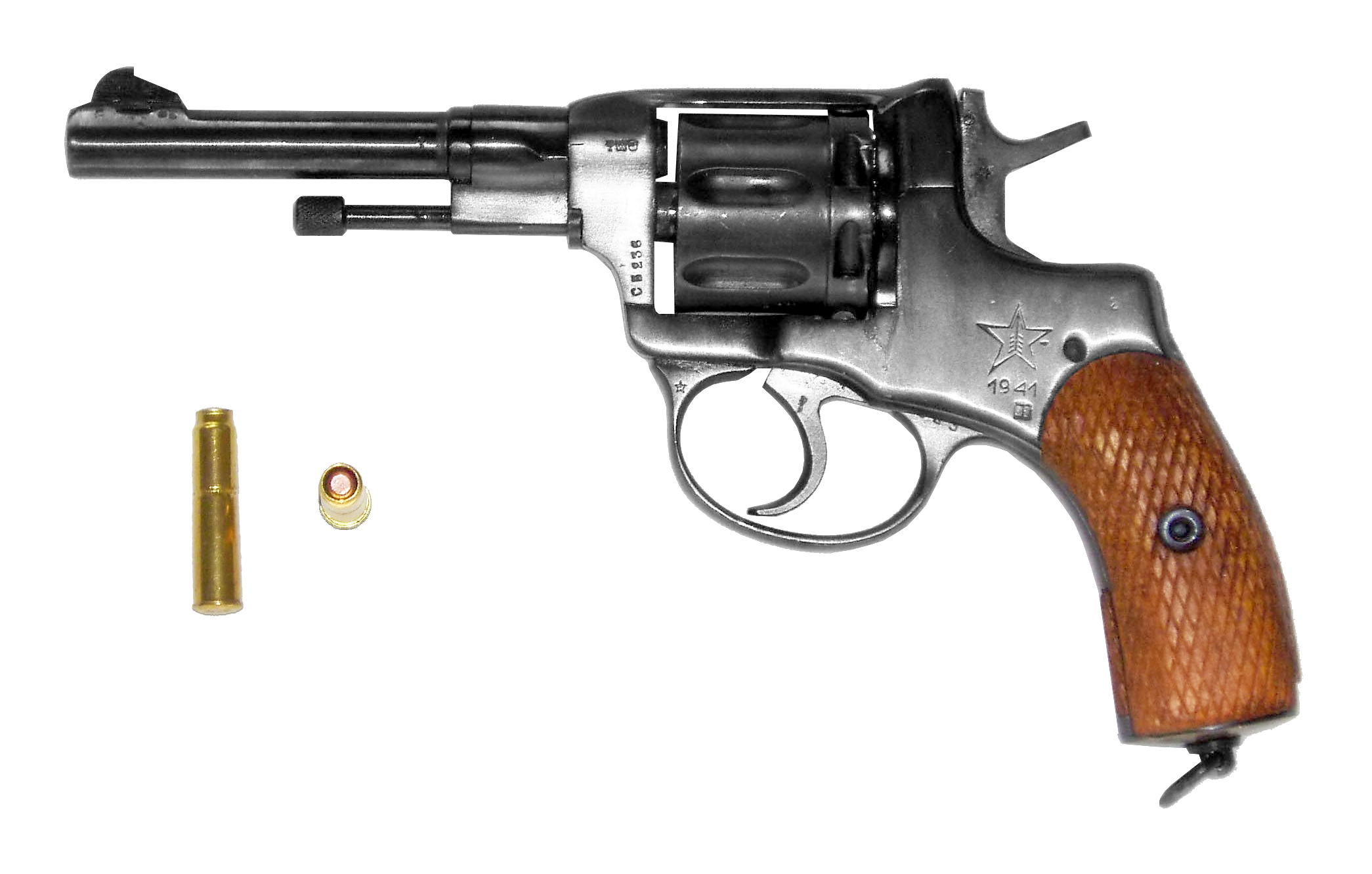|
RGO Hand Grenade
The RGO hand grenade (''Ruchnaya Granata Oboronitel'naya'', ("Hand Grenade Defensive")) is a defensive Soviet fragmentation hand grenade. It consists of a double layered steel pre-fragmented body. It is very similar to the single-layered offensive aluminium-bodied RGN hand grenade. It uses the UDZS dual action fuze, which has both impact and time delay functions. The impact fuze arms after a pyrotechnic delay of 1 to 1.8 seconds. If the impact fuze has not triggered the grenade after 3.2 to 4.2 seconds a second pyrotechnic delay triggers the grenade. The fragments produced by the grenade generate a lethal radius of between and , with the safety radius being . Unlike the two-part hemispherical RGN, the RGO is made up of 4 quadrants. One of the lower quadrants has a diamond-shaped cross-hatching in the outer shell. This is designed to help the operator to distinguish it by touch from the smooth-shelled RGN in low-light or dark conditions. History The RGN and RGO grenades were devel ... [...More Info...] [...Related Items...] OR: [Wikipedia] [Google] [Baidu] |
Soviet Union
The Soviet Union,. officially the Union of Soviet Socialist Republics. (USSR),. was a transcontinental country that spanned much of Eurasia from 1922 to 1991. A flagship communist state, it was nominally a federal union of fifteen national republics; in practice, both its government and its economy were highly centralized until its final years. It was a one-party state governed by the Communist Party of the Soviet Union, with the city of Moscow serving as its capital as well as that of its largest and most populous republic: the Russian SFSR. Other major cities included Leningrad (Russian SFSR), Kiev (Ukrainian SSR), Minsk ( Byelorussian SSR), Tashkent (Uzbek SSR), Alma-Ata (Kazakh SSR), and Novosibirsk (Russian SFSR). It was the largest country in the world, covering over and spanning eleven time zones. The country's roots lay in the October Revolution of 1917, when the Bolsheviks, under the leadership of Vladimir Lenin, overthrew the Russian Provisional Government ... [...More Info...] [...Related Items...] OR: [Wikipedia] [Google] [Baidu] |
Hand Grenade
A grenade is an explosive weapon typically thrown by hand (also called hand grenade), but can also refer to a shell (explosive projectile) shot from the muzzle of a rifle (as a rifle grenade) or a grenade launcher. A modern hand grenade generally consists of an explosive charge ("filler"), a detonator mechanism, an internal striker to trigger the detonator, and a safety lever secured by a cotter pin. The user removes the safety pin before throwing, and once the grenade leaves the hand the safety lever gets released, allowing the striker to trigger a primer that ignites a fuze (sometimes called the delay element), which burns down to the detonator and explodes the main charge. Grenades work by dispersing fragments (fragmentation grenades), shockwaves (high-explosive, anti-tank and stun grenades), chemical aerosols (smoke and gas grenades) or fire ( incendiary grenades). Fragmentation grenades ("frags") are probably the most common in modern armies, and when the word ''gre ... [...More Info...] [...Related Items...] OR: [Wikipedia] [Google] [Baidu] |
Phlegmatized
A phlegmatized explosive is an explosive that has had an agent (a phlegmatizer) added to stabilize or desensitize it. Phlegmatizing usually improves the handling properties of an explosive (e.g. when munitions are filled in factories. Alfred Nobel's breakthrough was the use of cellulose nitrate to phlegmatize nitroglycerine. The phlegmatized product is dynamite. TNT explosive can itself be used to phlegmatize more sensitive explosives such as RDX (to form Cyclotol), HMX (to form Octol) or PETN (to form Pentolite). Other typical phlegmatizing agents include paraffin wax (5% used in OKFOL and Composition H6), paper or even water (used in water gel explosives). Such agents are nearly always flammable themselves (therefore adding fuel to the blast) or will at least boil off easily. Typically, a small amount of phlegmatizing agent is used e.g. Composition B, which has 1% paraffin wax added, or the Russian RGO hand grenade which contains 90 grams of "A-IX-1" explosive, comprising 96 ... [...More Info...] [...Related Items...] OR: [Wikipedia] [Google] [Baidu] |
Hand Grenade
A grenade is an explosive weapon typically thrown by hand (also called hand grenade), but can also refer to a shell (explosive projectile) shot from the muzzle of a rifle (as a rifle grenade) or a grenade launcher. A modern hand grenade generally consists of an explosive charge ("filler"), a detonator mechanism, an internal striker to trigger the detonator, and a safety lever secured by a cotter pin. The user removes the safety pin before throwing, and once the grenade leaves the hand the safety lever gets released, allowing the striker to trigger a primer that ignites a fuze (sometimes called the delay element), which burns down to the detonator and explodes the main charge. Grenades work by dispersing fragments (fragmentation grenades), shockwaves (high-explosive, anti-tank and stun grenades), chemical aerosols (smoke and gas grenades) or fire ( incendiary grenades). Fragmentation grenades ("frags") are probably the most common in modern armies, and when the word ''gre ... [...More Info...] [...Related Items...] OR: [Wikipedia] [Google] [Baidu] |
RGN Hand Grenade
The RGN hand grenade (''Ruchnaya Granata Nastupatel'naya'', "Hand Grenade Offensive") is an offensive Soviet fragmentation hand grenade. It consists of a single layered aluminium pre-fragmented body. It is very similar to the defensive RGO hand grenade. The grenade shell consists of two internally serrated aluminium hemispheres. The UDZS fuze has both impact and time delay functions, the impact fuze arms after a pyrotechnic delay of 1 to 1.8 seconds. If the grenade strikes an object after this time a spherical lead shot filled impact weight will trigger detonation. If the grenade has not struck anything after 3.5 to 4 seconds the second pyrotechnic delay will detonate the grenade. The grenade has a stated lethal radius of 4 meters to a maximum of 10 meters, and a safety radius of 25 meters with the fragments quickly losing effectiveness past the lethal radius due to the aluminum pre-fragmented body, which was designed similarly to the RGN-86 (a variant of the RGD-5). It can be thro ... [...More Info...] [...Related Items...] OR: [Wikipedia] [Google] [Baidu] |
Fuze
In military munitions, a fuze (sometimes fuse) is the part of the device that initiates function. In some applications, such as torpedoes, a fuze may be identified by function as the exploder. The relative complexity of even the earliest fuze designs can be seen in cutaway diagrams. A fuze is a device that detonates a munition's explosive material under specified conditions. In addition, a fuze will have safety and arming mechanisms that protect users from premature or accidental detonation. For example, an artillery fuze's battery is activated by the high acceleration of cannon launch, and the fuze must be spinning rapidly before it will function. "Complete bore safety" can be achieved with mechanical shutters that isolate the detonator from the main charge until the shell is fired. A fuze may contain only the electronic or mechanical elements necessary to signal or actuate the detonator, but some fuzes contain a small amount of primary explosive to initiate the detonation. ... [...More Info...] [...Related Items...] OR: [Wikipedia] [Google] [Baidu] |
Delay Composition
Delay composition, also called delay charge or delay train, is a pyrotechnic composition, a sort of pyrotechnic initiator, a mixture of oxidizer and fuel that burns in a slow, constant rate that should not be significantly dependent on temperature and pressure. Delay compositions are used to introduce a delay into the firing train, e.g. to properly sequence firing of fireworks, to delay firing of ejection charges in e.g. model rockets, or to introduce a few seconds of time between triggering a hand grenade and its explosion. Typical delay times range between several milliseconds and several seconds. A popular delay charge is a tube of pressed black powder. The mechanical assembly prevents the outright detonation of the charge. While delay compositions are principally similar to other fuel-oxidizer compositions, larger grain sizes and less aggressively reacting chemicals are used. Many of the compositions generate little or no gas during burning. Typical materials used are: * Fu ... [...More Info...] [...Related Items...] OR: [Wikipedia] [Google] [Baidu] |
Soviet–Afghan War
The Soviet–Afghan War was a protracted armed conflict fought in the Democratic Republic of Afghanistan from 1979 to 1989. It saw extensive fighting between the Soviet Union and the Afghan mujahideen (alongside smaller groups of anti-Soviet Maoism, Maoists) after the former militarily intervened in, or launched an invasion of, Afghanistan to support the local pro-Soviet government that had been installed during Operation Storm-333. Most combat operations against the mujahideen took place in the Afghan countryside, as the country's urbanized areas were entirely under Soviet control. While the mujahideen were backed by various countries and organizations, the majority of their support came from Pakistan, Saudi Arabia, the United States, the United Kingdom, China, and Iran; the American pro-mujahideen stance coincided with a sharp increase in bilateral hostilities with the Soviets during the Cold War (1979–1985), Cold War. The conflict led to the deaths of between 562,000 and ... [...More Info...] [...Related Items...] OR: [Wikipedia] [Google] [Baidu] |
Ukraine
Ukraine ( uk, Україна, Ukraïna, ) is a country in Eastern Europe. It is the second-largest European country after Russia, which it borders to the east and northeast. Ukraine covers approximately . Prior to the ongoing Russian invasion, it was the eighth-most populous country in Europe, with a population of around 41 million people. It is also bordered by Belarus to the north; by Poland, Slovakia, and Hungary to the west; and by Romania and Moldova to the southwest; with a coastline along the Black Sea and the Sea of Azov to the south and southeast. Kyiv is the nation's capital and largest city. Ukraine's state language is Ukrainian; Russian is also widely spoken, especially in the east and south. During the Middle Ages, Ukraine was the site of early Slavic expansion and the area later became a key centre of East Slavic culture under the state of Kievan Rus', which emerged in the 9th century. The state eventually disintegrated into rival regional po ... [...More Info...] [...Related Items...] OR: [Wikipedia] [Google] [Baidu] |
List Of Russian Weaponry
The following is a list of modern Russian small arms and light weapons which were in service in 2016: Handguns Revolvers Pistols Special purpose Submachine guns Special purpose Shotguns Rifles Bolt-action Semi-automatic Selective-fire Special purpose Anti-materiel rifles Machine guns Squad automatic weapons (SAWs) General-purpose Heavy Hand grenades Fragmentation Anti-tank Grenade launchers Stand-alone Attached Automatic grenade launchers Rocket launchers General purpose Incendiary and thermobaric Special purpose Recoilless rifles Mortars Anti-tank guided missiles Man-portable air defense system Landmines See also * List of equipment of the Russian Ground Forces * List of Russian weaponry makers References {{DEFAULTSORT:Russian small arms and light weapons Weapons of Russia Lists of weapons Firearms of Russia, Russian and Soviet milita ... [...More Info...] [...Related Items...] OR: [Wikipedia] [Google] [Baidu] |
Fragmentation Grenades
A grenade is an explosive weapon typically thrown by hand (also called hand grenade), but can also refer to a shell (explosive projectile) shot from the muzzle of a rifle (as a rifle grenade) or a grenade launcher. A modern hand grenade generally consists of an explosive charge ("filler"), a detonator mechanism, an internal striker to trigger the detonator, and a safety lever secured by a cotter pin. The user removes the safety pin before throwing, and once the grenade leaves the hand the safety lever gets released, allowing the striker to trigger a primer that ignites a fuze (sometimes called the delay element), which burns down to the detonator and explodes the main charge. Grenades work by dispersing fragments (fragmentation grenades), shockwaves (high-explosive, anti-tank and stun grenades), chemical aerosols (smoke and gas grenades) or fire (incendiary grenades). Fragmentation grenades ("frags") are probably the most common in modern armies, and when the word ''grenade ... [...More Info...] [...Related Items...] OR: [Wikipedia] [Google] [Baidu] |





